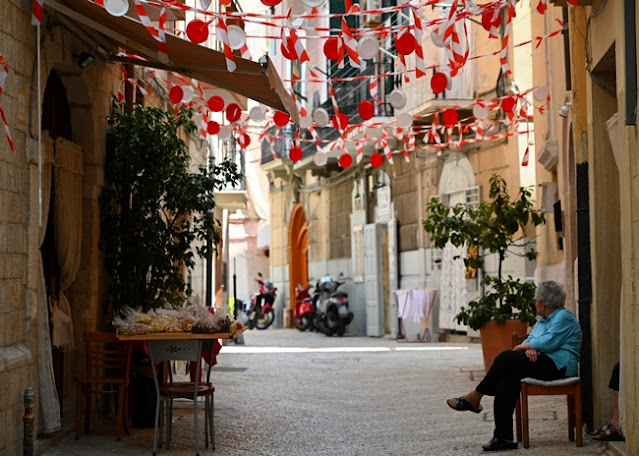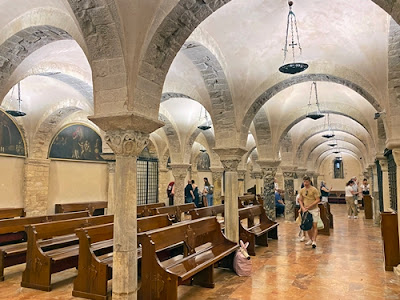Bari
Bari is a very old city in Puglia, southern Italy. It is dated from the Bronze Age. The ownership was switched between sovereigns several times. Destructions and rebuild alternated throughout the centuries. This background shapes Bari into a highly multifaceted city with a rich history. The best place to visualize the history is Bari Vecchia (old town) and the nearby areas with elegant buildings. Besides history, Bari has one of the most beautiful promenades (Lungomare) overlooking the clear sea and surroundings.

Go further north to Corso Vittorio Emanuele II and get greeted by other gorgeous buildings like Teatro Piccinni (Piccinni Theatre). It was dedicated to honoring the renowned composer Niccolò Piccinni, who was born in Bari in the eighteenth century. It was built to replace the deteriorating theatre incapable to house an ever larger audience due to the ample city expansion. The Piccinni Theatre is notable for its grand and elegant design, Neoclassical façade with ornate architectural details, including columns, pediments, and decorative sculptures.
To reach Bari Vecchia, alternately, one can go from the Bari Central Railway Station towards the promenade (Lungomare).
Two other magnificent theatres are located there. The first is Teatro Petruzzelli. The construction was completed in 1903. It is Bari's largest theater and the fourth largest in Italy. Apart from opera, The Petruzzelli Theatre also presents ballets and major concerts. Numerous renowned international artists graced its stage.
Further
north along the coast is Teatro Margherita. It is a former theatre and transformed
into a museum of contemporary art. The building itself showcases Art Nouveau
influences, with a rectangular layout and a prominent façade adorned with a
wide arch. Flanking the arch are two towers with decorative pinnacles,
complemented by large windows bordered by pilasters featuring Corinthian
capitals.

After
appreciating Teatro Margherita, just walk across the street is the Bari Vecchia. The old town is set within the city fortified walls with two
outstanding churches - St. Nicholas Basilica and Bari Cathedral. Both are fine
examples of Apulia Romanesque architecture.
The
Cathedral of San Sabino (St. Sabinus), formerly called the Cathedral of Santa
Maria Assunta (St. Mary of the Assumption) was built over the original
Byzantine church. The 12th- to
13th-century Romanesque cathedral, dedicated to San Sabino, is technically
Bari's most important church.
We stayed south of Bari Central Railway Station. Nearby our place stands the Russian Orthodox Church of Saint Nicholas quietly. It was built as pilgrimage home for Russian orthodox who visited the remains of St. Nicolas in Bari.
Another landmark within the old town is the imposing medieval fortress, Castello Normanno-Svevo or Schwabenburg. The origins of Castello Normanno-Svevo date back to the 12th century. The castle consists of massive stone walls, towers and fortifications that once protected the town from enemy attack. Inside, there are magnificent halls, chapels and courtyards that offer a glimpse of medieval life.
 |
| Italia.com |
Today, Castello Normanno-Svevo houses a museum that introduces visitors to the history and culture of the region. The exhibition includes archaeological finds, weapons, works of art and historical artefacts.
The
old town of Bari dates back to the Middle Ages and is surrounded by an old city
wall. Within the walls are narrow winding streets, cobbled lanes and historic
buildings.
The tiny streets are full of life and very pleasant to walk. People often write about older women making Orecchiette. As our first visit of Bari Vecchia was on a cloudy day with some rains, we saw abandoned table of Orecchiette. Ha ha! A rare and unique scene.
One can rest at numerous atmospheric piazzas with historical buildings and enjoy the fabulous smell from restaurants in the area. The grilled octopus sandwich from La Tano del Polpo is amazingly good. It is prepared on order. We originally planned to try out Mastro Ciccio. But the queue was extremely long. At La Tano del Polpo, just order and wait a few minutes to enjoy the heavenly octopus sandwich. We tried octopus sandwich at Polignano a Mare and and Trani. Their quality is incomparable.
The piping hot tomato-based focaccia from Bakery Santa Rita was excellent. We queued up for more than 20 minutes in the rain. But it’s totally worthwhile.
If you are still hungry, visit Maria delle Sgagliozze at Strada del Carmine 31. Sgagliozze is deep fried polenta. Maria was sitting at the back to supervise her daughter to do the hard work.
If you stay in B&B, try visiting Mercato Santa Scolastica, a very large open market with many stalls offering excellent choices of fresh produce. It is at Via G. Petroni, 90, south west of the Bari Central Railway Station. There are grids of stalls. Between grids are spaces with trees, at our time beautiful lilac flowers.



























Comments